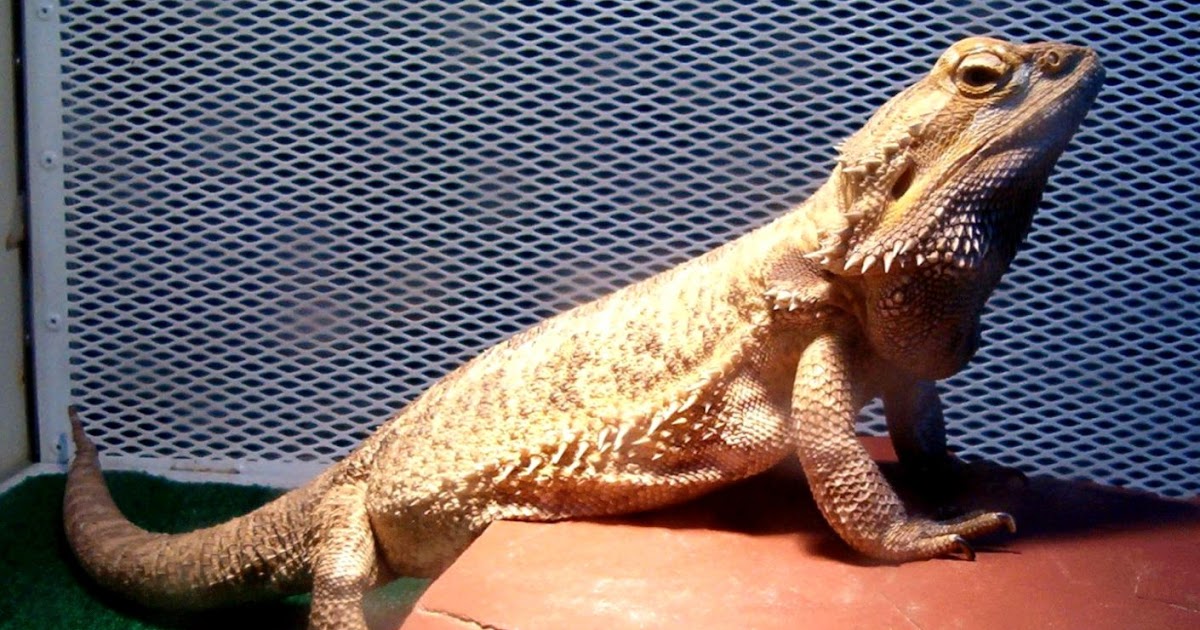The Ultimate Guide to Full Grown Bearded Dragon Tank Size
The Importance of Choosing the Correct Tank Size for Your Full Grown Bearded Dragon
Bearded dragons are one of the most popular pet reptiles, and for good reason! They are friendly, easy to care for, and have tons of personality. However, it’s important to ensure that your bearded dragon has the proper size tank to live in. Your bearded dragon will spend most of its life in its tank, so it’s crucial to provide a habitat that meets its specific needs.
Understanding Bearded Dragon Size and Growth
Before we dive into the specifics of tank size, it’s important to understand the average size of a full grown bearded dragon. Male bearded dragons can grow up to 24 inches in length, while females can reach lengths of up to 20 inches. Bearded dragons generally reach their full size at around 1-2 years old, depending on their sex, diet, and other factors.

Determining the Minimum Tank Size for a Full Grown Bearded Dragon
The general rule of thumb for bearded dragon tank size is that the tank should be at least as long as the dragon is from nose to tail. For example, if your dragon is 24 inches long, the minimum tank size should be 24 inches long. Bearded dragons need plenty of room to move around, bask, and explore their environment, so a larger tank is generally better if it’s feasible. We recommend a minimum tank size of 40 gallons for a single adult bearded dragon.

Factors That Affect Tank Size Requirements
1. Number of Bearded Dragons in the Tank
If you have multiple bearded dragons, you’ll need a larger tank to accommodate them. As a general rule, a tank that is 10 gallons larger than the minimum recommendation for each additional dragon is sufficient. So, for two adult bearded dragons, a 50-gallon tank would be appropriate.
2. Age and Size of the Bearded Dragon
Young bearded dragons require less space than adults, so you can start with a smaller tank when they are young and gradually increase the size as they grow. Keep in mind that adult bearded dragons that are on the larger side may require a larger tank than the minimum recommendation to ensure they have enough space to move around comfortably.
3. Activity Level and Temperament
Bearded dragons that are more active generally need more space than those that are more sedentary. Similarly, if your bearded dragon is particularly aggressive or territorial, you may need to provide more space to prevent conflicts.

Setting Up the Perfect Tank for Your Full Grown Bearded Dragon
Now that you know how to determine the appropriate tank size for your bearded dragon, it’s time to set up the perfect habitat! Here are some tips to help you create a comfortable and stimulating environment for your pet.
1. Cage Type
The most common type of cage for bearded dragons is a glass aquarium. These are easy to find, affordable, and provide good visibility for both you and your pet. Other options include plastic cages or screen enclosures. Regardless of the cage type you choose, make sure it has adequate ventilation and is escape-proof!
2. Lighting and Heating
Bearded dragons are cold-blooded, which means they rely on external sources of heat to regulate their body temperature. You’ll need to provide both UVB lighting and a heat source in the tank to keep your bearded dragon healthy. UVB lighting is essential for your bearded dragon’s overall health, as it helps them synthesize vitamin D3, which is necessary for calcium absorption. A good UVB bulb should cover at least two-thirds of the tank and be replaced every 6-12 months. As for heating, a basking lamp is necessary to provide warmth, and a ceramic heat emitter can be used at night to maintain temps.
3. Substrate
There are a variety of substrate options to choose from, including reptile carpet, paper towels, and sand. When choosing a substrate, it’s important to consider your bearded dragon’s size and age, as well as your own preferences. Reptile carpet and paper towels are easy to clean and sanitize, while sand can provide a more natural environment. However, if ingested, sand (and other loose substrates) can cause impaction in bearded dragons. If you choose to use sand, make sure to feed your dragon off of a dish and not directly on the substrate.
4. Decorations
A plain tank can be boring for your bearded dragon, so adding decorations can provide enrichment and allow your pet to explore. Some good options include rocks, branches, and caves. Make sure any decorations you choose are safe for your pet and won’t injure them.
5. Food and Water
Bearded dragons are omnivores and require a variety of both plant and animal-based foods. Offer a mix of greens, veggies, and live insects for a balanced diet. Provide fresh water daily in a shallow dish in the tank, and change it daily to prevent bacteria growth.

Conclusion
Choosing the right tank size for your full grown bearded dragon is crucial to their health and happiness. With these tips, you’ll be able to provide a comfortable and stimulating environment that meets their specific needs. Remember to research further into bearded dragon care to help ensure the best life for your pet!
